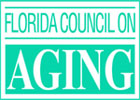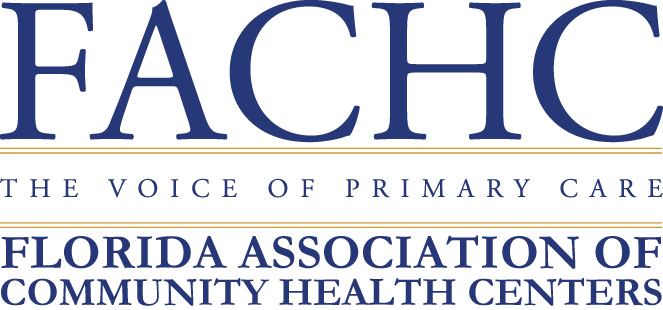No. 10: Job accommodation
Job accommodation silos within companies reside in multiple return-to-work (RTW) policies, both formal and informal.
Return to work is not a workers' compensation issue, alone.
The issue is inconsistent job accommodations across organizations. It makes little difference whether an employee is injured on the job and then requests an accommodation as part of a disability or leave of absence, or has the need for an accommodation in general. Circumstances should not alter the way in which an accommodation is handled.
In 2018, we encourage you to break down the RTW silos and get comfortable outside your typical area of responsibility. We should not only meet ADA requirements but also provide employees the accommodations they deserve.
No. 9: A potentially impaired workforce
Recreational marijuana is now legal in more states than ever before, with California becoming the largest state to allow use.
This may mean that a percentage of your workforce is impaired on the job.
Many employers stopped pre-employment drug testing for marijuana because too many potential workers failed the drug test and because the presence of marijuana in your system does not mean you are currently impaired.
That's the problem: Right now there is no reliable method for employers to determine whether an employee is impaired on the job. There is no "marijuana breathalyzer," per se, that can quickly and accurately show whether a person is imFaired.
What can employers do?
Courts have consistently ruled that employers with drug-free workplace policies can terminate an employee who tests positive for marijuana, even if they are using medical marijuana. There is one notable exception. Last year, a Maryland court allowed an employee to pursue a wrongful termination claim under these circumstances. Will other states follow the Maryland precedent or the cases in California, Colorado, Michigan and other states where the termination was allowed?
In addition, what happens now that the Department of Justice has rescinded the Obama administration policy memo that indicated the federal government would defer to the states to enforce marijuana laws. Does this mean the federal government will start to arrest marijuana users and producers? No one knows for certain. Perhaps this will force Congress to take action on legal weed.
No. 8: The digital health connectivity challenge
Digital health is a broad term related to the use of technology and health. Examples include mobile health apps, telemedicine products, tools to track consumer/patient data, education and patient reminder programs, and treatment adherence.
For those working in the digital health space, connectivity is the issue. There are plenty of technology solutions, the challenge is connecting all of the stakeholders: patients, doctors and service providers, pharmacists, and insurer. Without connectivity, silos remain and the system is too clunky to be effective.
Probably the most common digital health discussion in workers’ comp is telehealth. We have been slow to adopt comprehensive programs, whereas the benefits space has been at it for over 5 years. Group health has moved past triage of physical symptoms to treating mental health and, in 2018, moving into chronic disease management. Look for more hospitals to offer telehealth services as they diversify care offerings and seek to enhance their offerings.
Now is the time for workers’ comp to jump on board.
No. 7: OSHA reflects political winds of change
Under the Obama administration, the Occupational Safety and Health Administration (OSHA) engaged in a practice of 'shaming' employers in compliance. That meant frequent press releases highlighting violations, even if those violations were later rescinded. Consider that in 2016, there were over 200 OSHA press releases on enforcement actions.
OSHA under President Trump has been much more focused on education than penalties. As of late October, they had issued less than 20 press releases on enforcement actions. Scott Mungo, who worked for FedEx Ground, was nominated by President Trump to head OSHA in October. In December, his nomination was approved by the Senate committee and it is expected he will be confirmed by the full Senate soon.
What should we expect from OSHA under President Trump? If the first year of his term is any indication, we will see less new regulations and perhaps even a rollback of some existing regulations. The approach has been more consultative with employers, rather than combative.
No. 6: Workforce wellness
Benefits are a talent attraction and retention tool in 2018.
Human resource officers are deploying programs to address physical, emotional and financial wellness — the three pillars of health.
Wellbeing programs place emphasis on an individual's personal needs and considerations for both health and productivity. Workplace wellbeing programs in 2018 expand far beyond weight loss and smoking cessation. They may also include financial planning tools, resilience, and mental health awareness training. To promote the use of benefits, human resources departments need to breaking down the benefit silos. The whole health model at Sedgwick health is a great example because it integrates group health, leaves of absence, workers' compensation, short-term disability, and job accommodations. Benefit integration and ease of use drives engagement, which, in turn, positively impacts business performance.
No. 5: Fraud evolves
When you hear about workers' compensation fraud, the first thing that comes to mind is videos showing allegedly disabled workers engaged in a variety of physical activities they claim to be unable to do. While these videos are sensational, the reality is that true fraud from injured workers is rare.
The most common source of workers' compensation fraud comes from employers in the form of premium fraud. Underreporting payroll, misclassifying workers, and incorrectly classifying workers as independent contractors is something that happens all too often. Employers that commit workers’ compensation fraud drive higher premiums for honest employers and also create an unfair competitive business environment. The construction and staffing industries have been dealing with this issue for many years. Many states have been aggressively cracking down on this type of fraud, but it continues to be a significant problem.
Medical provider fraud is another area of workers' compensation fraud getting more attention lately. In the last two years, we have seen several high-profile prosecutions of medical providers in California. The fraudulent treatment alleged in these cases amounts to billions of dollars. We have not seen medical fraud like this in other states, in part, because of California’s system has a high percentage of post-injury CT claims, which allows unauthorized treatment and the filing of a lien by the medical provider. These elements create an environment that is ripe for fraud and abuse. Hopefully, we will not see this fraudulent behavior spread to other states and California will continue its diligent prosecution of these cases.
No. 4: Consumer experience and engagement
We are living in a consumer's world today.
The pace with which we want our services delivered and the high standard of excellence expected has led all sectors in business, including health and workers' compensation, to consider their definition of consumer.
Failure to engage a consumer leads to complaints and negative PR, possibly lack of treatment adherence, whereas high levels of consumer experience lead to positive outcomes. You will hear more about the use of net promoter score (NPS) to understand consumer experience and link to engagement in 2018 and we believe the use of NPS has potential in workers’ compensation.
Now is the time to engage consumers in the conversation around our products, services, and certain program design. To that end, the injured worker's voice is often missing in the workers' compensation system.
No. 3: People, places and things
The aging workforce, the evolving workforce, and technology are all having a significant impact on the workers' compensation industry.
In the coming years, we will see a significant exodus of talent from our industry due to retirement. How do we attract the next generation and compete against other industries for people? What will the office of the future look like? How will changes in technology impact the way we do our jobs, including how we communicate with injured workers?
No. 2: InsurTech goes mainstream
If you have not checked out the latest conversations in InsurTech, 2018 is the time.
The market has grown considerably in the last three years with a worldwide platform.
Those engaged with InsurTech believe new tech players will disrupt the current insurance market by bringing coverage to a digitally savvy customer base. Customer expectations of seamless, instant transactions are increasingly the norm and insurtech use of blockchain and AI are promising — although yet to be proven in most scenarios. Much of the focus of insurtech is on personal lines, however, it is starting to move into commercial segments.
McKinsey reported last year that 46% of InsurTech companies are focused on property and casualty, 33% on health, and the remaining on life. They target primarily pure risk insurance, where they have developed access points to the value chain on innovations.
No. 1: Immigration reform
Finally, immigration reform is something that has been talked about politically for years, but Congress has not been able to advance any meaningful discussions in this area. Will that change in 2018?
Our country and Congress appear deeply divided on this very important issue. The outcomes of these discussions could have a significant impact on the millions of undocumented immigrants currently working in this country without the benefit of workers’ compensation coverage or other workplace rules and regulations.
Source: PropertyCasualty360









